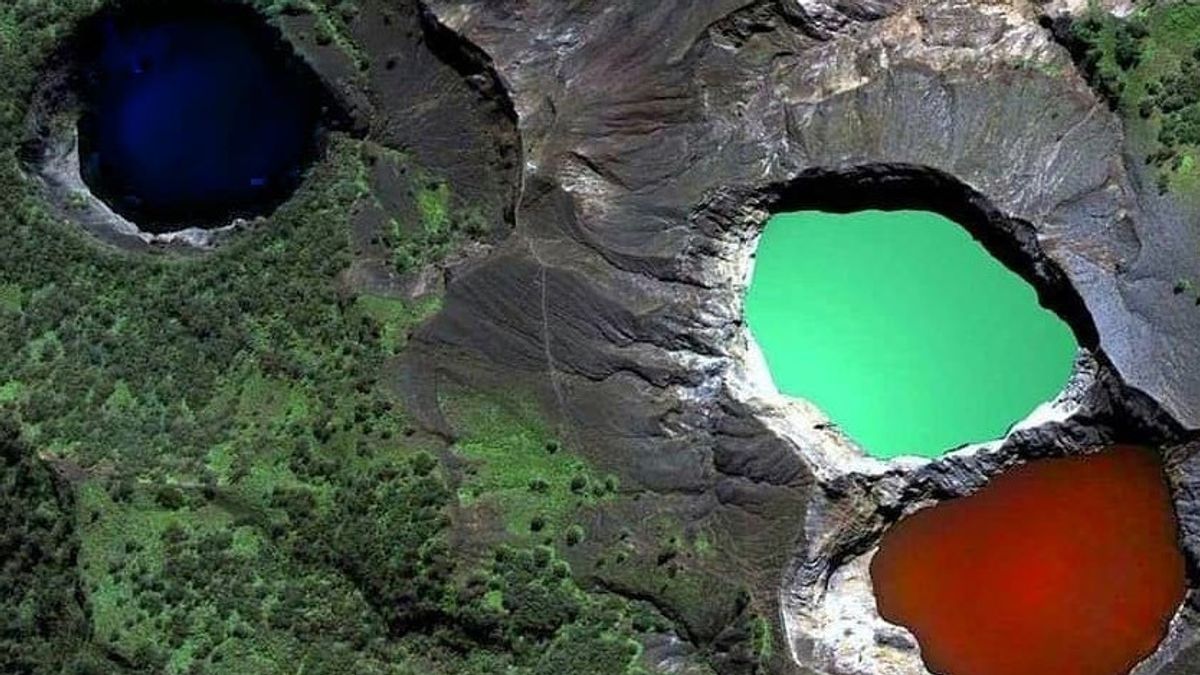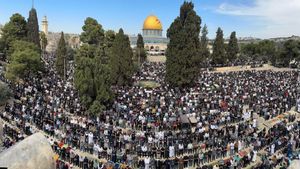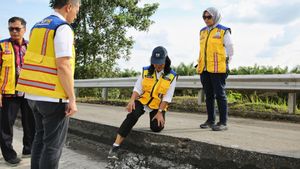JAKARTA - The words of DPR member A Bakri HM said that there was nothing special in East Nusa Tenggara (NTT) because many people responded to it because it was considered a blunder. Many voiced questions why council members did not know NTT tourism.
"I see the 2021 program, 5 strategic areas for national tourism, it would be nice maybe in the future every member will have data on tourism programs in the region. It's a sense of justice. Yesterday, I was invited by my friends from Commission V to visit NTT. There was nothing special, Ma'am there, the most special was the commodity, ”said politician PAN Bakri directly speaking in the DPR Commission V room.
But in fact NTT is not as small as Bakri HM's description or understanding. Bakri HM — who during a hearing with the Director General of Human Settlements and BPIW — admitted that he had sat for 3 consecutive terms as a member of Commission V of the DPR, saying that only dragons were special in NTT. That is right?

In fact, there are many natural attractions in NTT. One of them is the charm of the Kelimutu National Park. At the peak of Kelimutu, there are three crater lakes with different colors.
Local people believe, this crater is a place for the soul to reside. Quoted from the Kelimutu National Park website, local people believe the three lakes in Kelimutu are silent witnesses to the residing of the ancestral spirits of the Lio community.
There are local beliefs regarding selection by Konde Ratu or Juru Kunci Spirits. People who behave badly during their lifetime, die unnaturally, be they old or young, will be placed in the Tiwu Ata Polo Crater.
The Kelimutu National Park conservation area with an area of 5,356.50 hectares is the smallest national park of the 54 National Parks currently owned by Indonesia.
However, Kelimutu National Park is the only volcano in Indonesia that has more than one crater lake with different colors. The charm of the three lakes with their natural landscapes is what makes them worldwide.
Kelimutu is the name of one of the two highest mountain peaks in the conservation area, namely Mount Kelimutu (1,690 masl) and Mount Kelibara (1,731 masl).
Its unique and enchanting natural landscape cannot be separated from the volcanic activity that has occurred since millions of years ago. Until now, his activities are still happening. This is what makes the three lake water colors different and changing. Unpredictable. What was previously red can turn green. Vice versa.
Not only that, the vaccinium plant (Vaccinium variangevolim), which grows dominantly around the lake, will dry up as soon as Kelimutu stretches.

The three crater lakes at the top of Kelimutu are the main attraction. The three of them have their respective names according to the beliefs of the surrounding community: Tiwu Ata mBupu Crater (Lake of the Spirit of Orang Tuan) - the water is usually blue, Next is the Tiwu Nua Muri Kooh Fai Crater (Mudi's Young Arwah Lake) - the water is green, and the Tiwu Ata Crater Polo (Woven Spirit Lake) - the water is red.
The charm of the sunrise from the top of Kelimutu combined with the view of the three crater lakes will really give you such a magical feel. Undoubtedly, you will be amazed and will promise to always come back to see him.
The people living around the Kelimutu National Park have lived in harmony with the nature of Kelimutu for centuries. The Lio tribe who live around Kelimutu, every year carry out cultural rituals, as a form of gratitude for the harvest obtained. They will perform the Gawi dance, an offering to the ruler of heaven: Du'a Ngga'e. Asking Queen Konde for directions to the ruler of the crater, so that the deceased spirits are not placed in the Tiwu Ata Polo Crater.
However, even though the area is relatively small, as a national park, Kelimutu has a variety of natural resources typical of the east, especially the land of Flores. Some of them are even rare and endemic species.
There is a forest arboretrum area in Kelimutu National Park covering an area of 4.5 hectares which stores a collection of flora diversity in this nature conservation area. Here you can learn about various representatives of the Kelimutu National Park tree species. Recorded more than 100 species of flora growing and developing in Kelimutu. Two of them are endemic: Uta Onga (Begonia kelimutuensis) and Turuwara (Rhondodenron renschianum).

For the fauna, of several species that are endemic to Flores, the Gerugiwa bird (Monarcha sp), is one of the highlights. Rarely seen, this bird is also known as a spirit bird. Uniquely, Gerugiwa has 11 different voices. So, if you can see it while climbing, you are one of the lucky ones.
Until now, the sacred values of the Kelimutu ancestors are still maintained by the Lio people. One of them, through Patika Do'a Bapu Ata Mata - a ritual of feeding ancestral spirits at the Pati Ka Site in the area of a three-colored lake, led by a Mosalaki.
The ritual, which is carried out every year, will usually be followed by a meal together and a gawi dance led by the traditional leader with 21 Indigenous Communities. This shows the high respect for nature and ties between villages that are still maintained and go down and down.
The English, Chinese, Japanese, Arabic, and French versions are automatically generated by the AI. So there may still be inaccuracies in translating, please always see Indonesian as our main language. (system supported by DigitalSiber.id)










